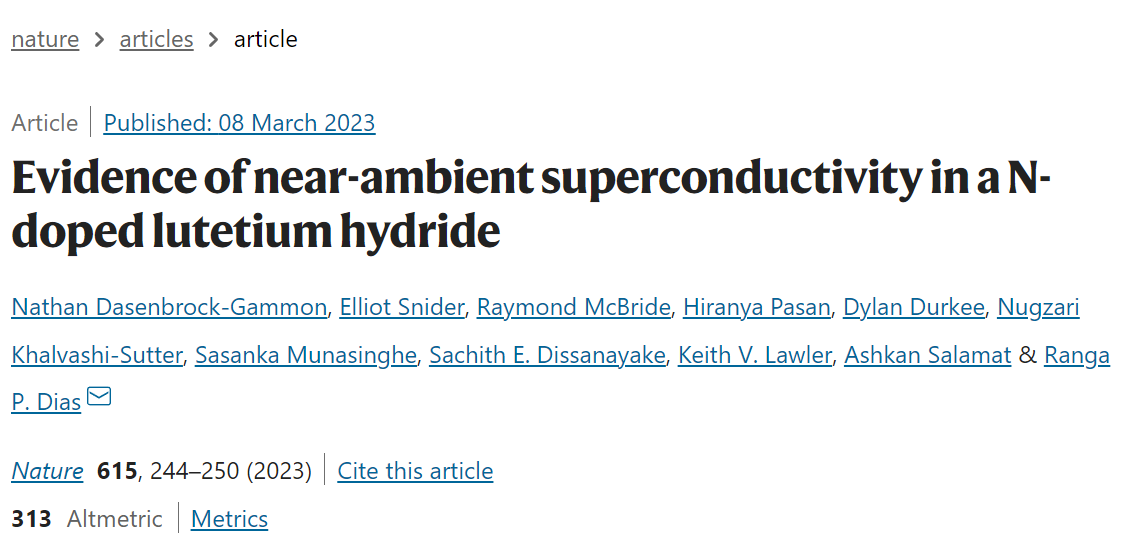
The absence of electrical resistance exhibited by superconducting materials would have enormous potential for applications if it existed at ambient temperature and pressure conditions. Despite decades of intense research efforts, such a state has yet to be realized1,2. At ambient pressures, cuprates are the material class exhibiting superconductivity to the highest critical superconducting transition temperatures (Tc), up to about 133 K (refs. 3,4,5). Over the past decade, high-pressure ‘chemical precompression’6,7 of hydrogen-dominant alloys has led the search for high-temperature superconductivity, with demonstrated Tc approaching the freezing point of water in binary hydrides at megabar pressures8,9,10,11,12,13. Ternary hydrogen-rich compounds, such as carbonaceous sulfur hydride, offer an even larger chemical space to potentially improve the properties of superconducting hydrides14,15,16,17,18,19,20,21. Here we report evidence of superconductivity on a nitrogen-doped lutetium hydride with a maximum Tc of 294 K at 10 kbar, that is, superconductivity at room temperature and near-ambient pressures. The compound was synthesized under high-pressure high-temperature conditions and then—after full recoverability—its material and superconducting properties were examined along compression pathways. These include temperature-dependent resistance with and without an applied magnetic field, the magnetization (M) versus magnetic field (H) curve, a.c. and d.c. magnetic susceptibility, as well as heat-capacity measurements. X-ray diffraction (XRD), energy-dispersive X-ray (EDX) and theoretical simulations provide some insight into the stoichiometry of the synthesized material. Nevertheless, further experiments and simulations are needed to determine the exact stoichiometry of hydrogen and nitrogen, and their respective atomistic positions, in a greater effort to further understand the superconducting state of the material.

